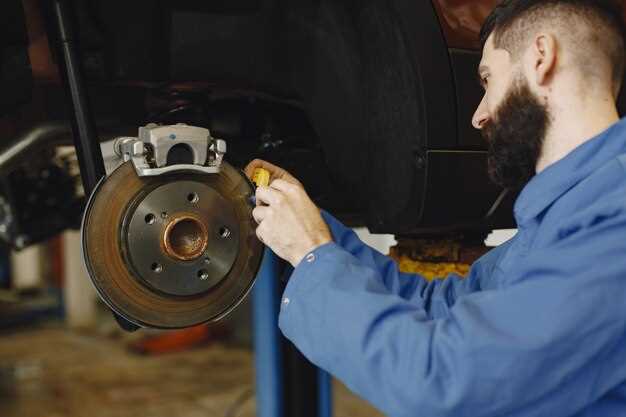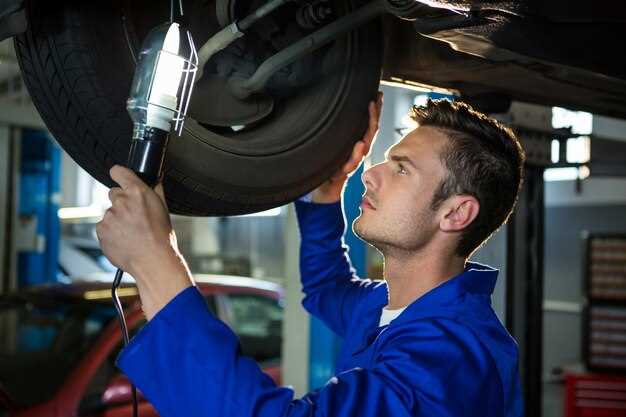
A brake inspection is a crucial component of vehicle maintenance that ensures your safety on the road. During this process, certified technicians will check the various elements of your braking system to identify any issues that may require attention. A thorough inspection not only helps in preventing potential accidents but also contributes to the overall longevity of your vehicle.
Typically, a brake inspection begins with an assessment of the brake pads, rotors, and calipers. Technicians will check for wear and tear, as well as any signs of damage. Depending on their findings, they may recommend necessary repairs or replacements to keep your braking system functioning optimally. Open communication about the condition of your brakes is paramount, as it allows you to make informed decisions regarding your vehicle’s service.
In addition to examining the mechanical components, technicians will also inspect the brake fluid levels and the overall hydraulic system, ensuring there are no leaks or other issues that could compromise braking performance. By understanding what to expect during a brake inspection, you can better appreciate the importance of regular service and proactive maintenance for your vehicle’s safety.
Key Signs Indicating the Need for a Brake Check

Regular brake checks are essential for maintaining vehicle safety. Several key signs can indicate that a brake inspection is necessary. If you notice any unusual noises, such as squeaking, grinding, or rattling sounds when applying the brakes, it may signal worn brake pads or other components that require repair.
Another important sign is a decreased response time when engaging the brakes. If the pedal feels soft or sinks to the floor, this could indicate air in the brake lines or a fluid leak, both of which necessitate immediate attention. Additionally, if your vehicle pulls to one side while braking, this may point to uneven wear or an issue with the brake calipers.
Vibration during braking is a further warning sign that should not be ignored. This can result from warped rotors and necessitates a thorough evaluation. Finally, keep an eye on the brake fluid level; a drop in fluid can indicate a leak or other issues that require prompt identification and repair.
Steps Involved in the Brake Inspection Procedure

The brake inspection process begins with a thorough visual check of the brake components. This includes examining the brake pads, rotors, calipers, and brake lines for any visible wear or damage. Inspecting these parts helps identify issues that may require immediate repair.
Next, a technician will measure the thickness of the brake pads. If they are below the manufacturer’s recommended minimum thickness, replacement is necessary to ensure optimal braking performance. Additionally, the rotors will be checked for any signs of warping or scoring that might affect the operation of the brakes.
The brake fluid is then assessed for quality and level. A low fluid level might indicate a leak in the system, while contaminated fluid can compromise brake effectiveness. If the fluid shows signs of contamination, a complete brake fluid flush and replacement may be required.
After inspecting the fluid, the technician will check the brake lines for leaks, cracks, or corrosion. Ensuring the integrity of the brake lines is crucial for maintaining proper hydraulic pressure and safe braking function.
Finally, a test drive is conducted to assess the overall performance of the brakes. During the drive, the technician will listen for unusual sounds and check for any vibrations or pulling to one side, which can indicate further issues that need to be addressed. This comprehensive approach ensures that all aspects of the brake system are functioning correctly and safely.
Understanding Brake Repair Services and Costs
When it comes to vehicle maintenance, brake repair is a critical service that ensures safety on the road. Understanding the types of brake repair services available can help you make informed decisions. Common services include brake pad replacement, rotor resurfacing or replacement, and brake fluid change. Each service addresses different components of the braking system, ensuring optimal performance and safety.
Brake pad replacement is one of the most frequent repairs. Over time, brake pads wear down due to friction, leading to decreased stopping power and potential damage to rotors. The cost of replacing brake pads varies based on the vehicle make and model, but you can generally expect to pay between $100 and $300 per axle.
Rotor resurfacing is often necessary when pads are replaced. Smooth rotors provide a flat surface for brake pads, reducing vibration and noise. In some cases, rotors may need complete replacement instead of resurfacing, especially if they are warped or excessively worn. The cost for rotor services can range from $50 to $150 per rotor, depending on various factors.
Brake fluid change is another essential service that helps maintain hydraulic system efficiency. Over time, brake fluid can absorb moisture, leading to corrosion and reducing effectiveness. This service typically costs between $70 and $150.
Overall, the costs of brake repair can vary significantly based on the service required, parts used, and labor rates in your area. It is advisable to consult with a reputable mechanic who can provide a detailed estimate and ensure your vehicle’s braking system operates safely and efficiently.

